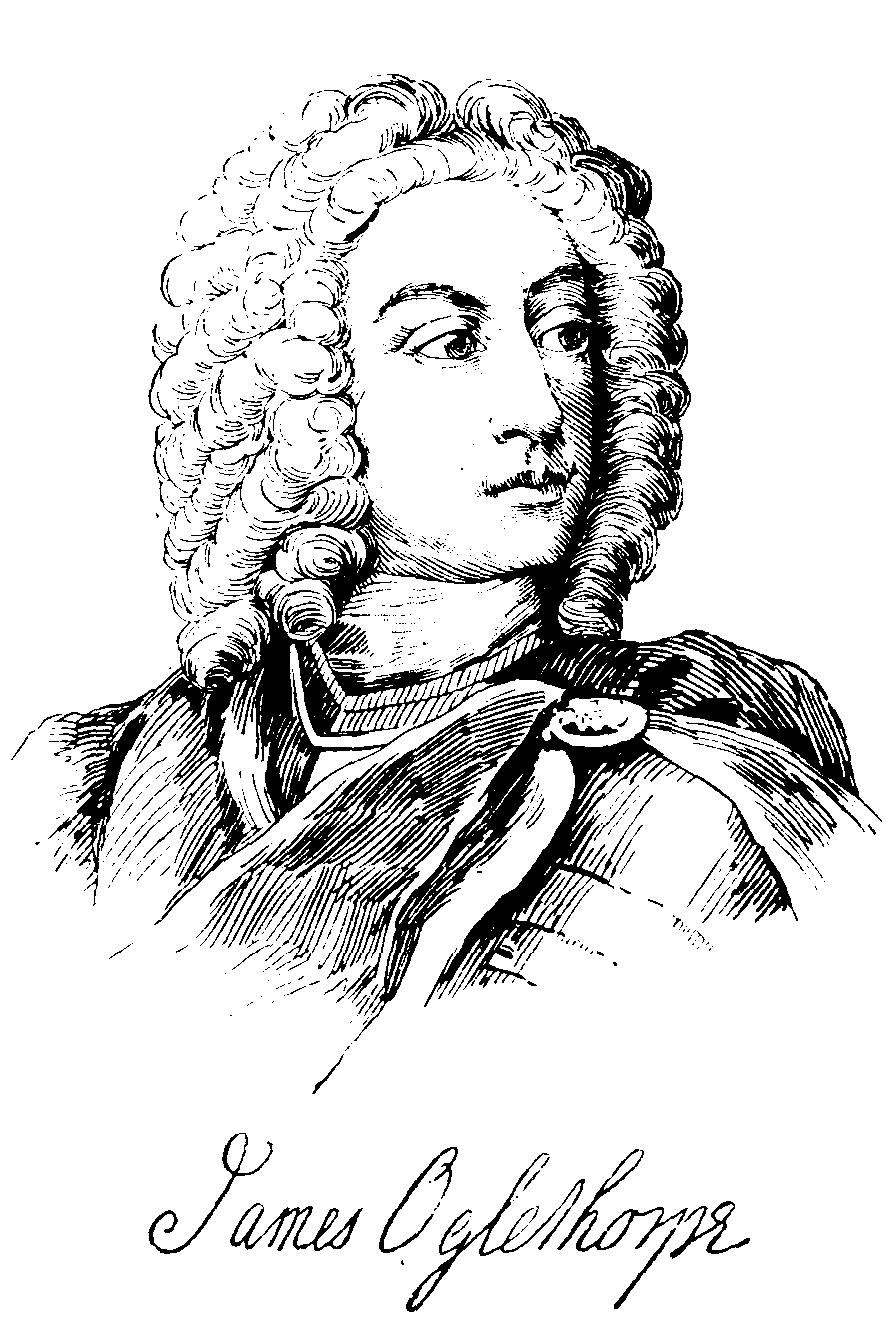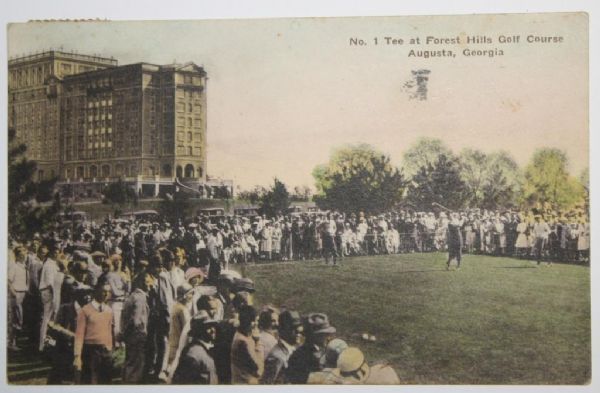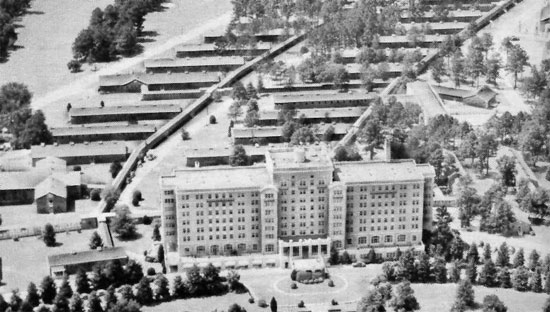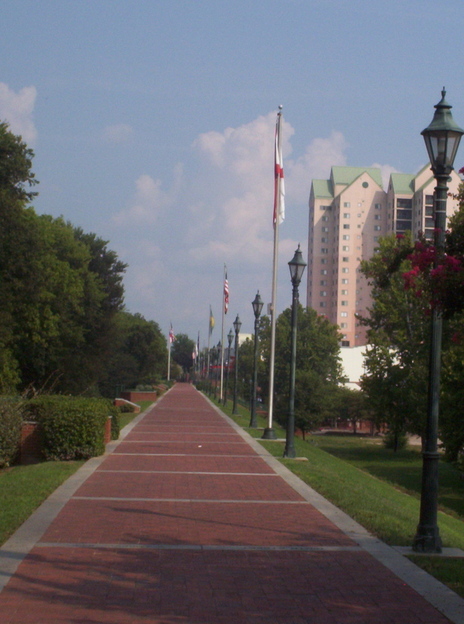Prehistory

(Before Europeans arrived the land in and around Augusta was dotted with Creek Indian civilizations. The proceeds of hunter and gathering was traded with other Indian tribes up, up and down the river, but namely in South Carolina. Augusta is naturally a geographically excellent place to cross the river into Carolina. These Indians settlements, ruins and arrowheads are scattered throughout the CSRA and namely in creek beds and the small ponds throughout the Southern side of the city near the Burke County border)
Colonial Era
The colonial era was one of rapid formation, assimilation and of a scramble for power. Who was going to rule and have power in this new experiment called America. Augusta was developing into a typical English town in America with a large backwoods and a small population. The town was one of the smaller ones in the largely rural America, but was developing fast in industries that would later thrive as the urban conditions improved in density and division of services offered. The lawlessness of the area was strong from the backwoods farmers coming into town to sell their crops and a relatively young population of debtors, mentally problem-ed and blue collar workers. One of the first laws to come about during in Augusta was a law barring the shooting of firearms in the street. I imagine Augusta at this time as a bustling half mile of shanty houses and travel. It was on the borderlands of the rest of the American colonies and was a buffer in every sense for their protection. The Indians in Augusta, Spanish traveling from Florida and the regular flow of new settlers to more remote parts of Georgia enabled Augusta to grow and be the 2nd most dominant city in Georgia.
.jpg)
(Tobacco paid for the mortgage, the food, the schooling, the clothes, the furniture, the candles/soap/leather and just about anything else bought in early Augusta. Tobacco was the drug of choice in Europe and Scottish, English, Dutch and Portuguese merchants were dying to get some back to the mainland, where demands was growing in bounds. The tobacco grown in Augusta was going to fuel merchants such as the Glasgow Tobacco Lords, a group of aristocrats that would greatly influence the South-East United States later. It is important to remember that Georgia was made for money. To settle a land in America required a business like charter and Georgia was seen very much as a place linked in the elaborate Atlantic Tobacco-Slave-Manufactured goods empire of Great Britain)

(James Oglethorpe, the founder of Georgia, Savannah and Augusta. He walked from his boat to the center of what is now the Augusta Commons and rolled down his charter paper and announced the area to be "Augusta" named after a Princess in Wales, England. This man, and the English culture would be the 2 building blocks of Augusta's identity to this day. It is also interesting to note that Oglethorpe originally wanted the city to be non-slave owning but the interests of the local populace and the entrails of slavery were to attractive to turn down for the society at this point. The era of greed was in full swing, as men were ambitious at an infinite cost to others and collectively, the English colonies caught the fever. Greed and materialism was borne in America, and Augusta's history. It should be remembered as that and we should keep the pure greed motive in check as a people. Oglethorpe had good foundations for the State and the city, but it soon succumbed to drinking, slave owning and loan sharking, 3 principles Oglethorpe stood against. This man is probably the most interesting in Georgia's history)

(The Ezekiel Harris house, one of the oldest standing residential structure in Augusta Georgia, built in 1798 by Ezekiel Harris, a tobacco merchant. He was trying to lure business to his town for his (Augusta was about a mile East, this was Harrisburg ferry and storage of Tobacco. The house was once thought to be the site of a hanging of soldiers in the revolutionary war, but it was later found to be another structure. The ghost stories still exist though and this house is truly a gift, many places in America do not have anything standing from the 1700's, this is Augusta link into the time right after the revolutionary war)
.jpg)
(The Academy of Richmond County, a school for the planter's, lawyer's, doctor's and politician's sons. The curriculum reflected an English style of teaching that was critical of your cursive handwriting, vocabulary, grammar and math. This is the oldest public high school in the South and the 5th oldest in the nation, established in 1783. 2 years later, another "Ancient" Southern institute was founded, University of Georgia. The aspirations of many from the rural backwoods of the state of Georgia dreamed of making to a place like the University of Georgia, it is Augusta's true first link into any center of learning for subjects that the cities in Georgia alone, could not provide. Many who would go to UGA would return with their skills and start a business, improve agriculture, teach, preach or run for politics)

(George Walton, one of the original signers of the declaration of Independence lived in this building in Augusta. The road, Walton Way is named after him and is one of the most prestigious streets to live on in some parts. The section of Walton Way that runs by this house is riddled with medical facilities In Walton's day this was considered out of the city and may have required a wooded trail to get to)
Antebellum Period

(Marion-Thatcher Center, home to John Phinizy, a merchant and mayor of Augusta. Phinizy spelled his name differently to win votes and the support of the largely Anglo population. Religion was fierce in the Deep South and Americas adoption of the protestant church early in its formations made the Catholic Italians reek of bad associations. He modeled this home in 1835 to resemble Italian houses, in the new world of America. The wealth of Augusta at this time was growing rapidly with the larger trends of the American economy in general, but also to the abundant slave trade, constant war in Europe and world agriculture markets. Many homes like this one that exist speak of the gains made in this economy. The times were well and people were awed at such beauty as European architecture luxury goods and the basic consumer items we think of became available to the growing markets and shops of Augusta. A lot of weddings in Augusta are done here in this building, or at other Greene Street locations)

(The Old Medical College building is an example of the impact of classical architecture in the time. It seems that the world goes into cycles of appreciation Roman architecture as they are booming and reflecting on past greatness, Augusta itself is a Roman name for emperor. This is a connection for Augusta to the days of Aristotle and later, Julius Ceaser. The specialization early of Augusta into this higher education field would lead to its largest contributor to the economy today. The Medical College of Georgia has grown from this small building to having a $2,000,000,000 economic impact on the economy now)

(Doctors are first scientists and they study humans. The tools and procedures of the time were archaic, but the research pushed on and advanced healthcare. Augusta has another story with some of the doctors here paying for some African American bodies from the Cedar Grove Cemetery about 6 blocks East of the school. They, supposedly, would conduct the same kind of procedures and test in scenarios similar to Edgar Allen Poe's short story, "The Premature Burial". The times called for science and logic. The school itself is shown in the painting in the upper right and the man are all intrigued deeply by the subject at hand. The night lessons of dissecting bodies and the lab presentations like this led to Augusta's edge as a medical center. The pondering of these men in this picture sparked many later ideas that are detrimental to care. To be a doctor is serious business and the standards are quite high. To have gone into medicine and not the many other fields for talented labor at the time, was a detrimental move for Augusta history. Imagine if Georgia Tech was in Augusta and the Medical College of Georgia was started in Atlanta? The decision were not known by the men of the time, but 100's of years later the path they set Augusta on is still on projection. Georgia Regents University is now the umbrella university of the Medical College of Georgia and the same kind of procedures, with modern science, are still going on)
(A common scene for the majority of the CSRA, king cotton was the lay of the land. The economy depended on agriculture Weather, advancements in crop technology and credit were crucial to the rural business like style of Southern Plantations. With the invention of the Cotton gin, which was invented in Rocky Creek, Georgia, which is now Augusta)
(The industry of cotton created a heavily imbalance of incomes. The plantation owners got rich, even more so, per capita, than their Northeast merchant counterparts. The class division reminds me a lot of Rome, where a small group lived in extreme luxury, there was a small middle class and under it all was a mass of slaves that fueled the labor intensive industries. The Plantation wealth was usually shown in the city and in the countryside. Many owners would have a house on "The Hill", next to an influx of wealthy Northeast merchant class based individuals. The massive Planters homes of the time were outpacing, in elaborate design and size to their European influences. America was a drawing ground for many styles and they all sat next to each other, like a small assortment of the world in this jungle of pine and oak trees)

(A postcard rendering an artists description of the Old Slave Market at the corner of 5th and Broad. There is a pillar to the right, not shown in this picture that is believed to be cursed by an abolitionist that came to Augusta and preached against slavery. Finding an unwilling and exceptionally stubborn audience, he cursed a pillar and for whoever touches it is to die. This is of course, probably not the actual history, but it does speak of the mood of the deepest corridor of slavery. Georgia was the most south of the 13 original colonies and had relatively no influence from the Northeast, whom were about as long a trip away as to sail to England and back)
Post-Civil War-World War 2

(Springfield Baptist Church, 1867, it would later move to Atlanta and become Morehouse College. An example of an opportunity that blew Augusta by in history. This current structure was built in the turn of the 20th century and an older buildings, constructed in 1801. The church had ties throughout the newly freed black population in Richmond, Burke, Aiken, Edge-field and Columbia County and would proceed to act as the center of business, religion and social life for the black community of the time)

(Lucy Craft Laney was an early Augusta educator and an exceptional community figure. She started the first black school in Augusta with only 6 students and quickly grew it into 800 and stretched an entire city block. She left a culture of "education can solve anything" that Augusta desperately needs. The neighborhood is named after her and another community figure in Augusta, Walker, hence, Laney-Walker Boulevard. Her museum still stands at her residence at 1116 Philips street, which is next to the modern day Laney High School, a traditional southern and football loving school)

(In 1903, a flu epidemic struck the city, the hardest case of all American cities at the time and left a feeling of abandonment as people did not gather in large groups, nor stay in the streets, as to not catch the disease themselves. Many residents wrote to the Government for help, and did not receive it. A tough lesson and indicative of the fiscal conservative nature of the federal government at this time. The situation got so bad that students were recruited as nurses and makeshift hospitals were frequent around the city)

(Augusta, being on a huge river, is flooded through its history. Other natural disasters, like fires, have an extensive history in Augusta and are the #1 reason historical buildings were wiped in this time. If not for the frequent flooding and fires, Augusta would have an even older building stock downtown)

(Another postcard rendering 7th and Broad looking West. The new buildings and high vacancy for retail is what is missing for today's economy. This strip was in balance with the amount of business committed in the plantations, sharecropped land and other farms in the Metro region. The cotton grown for 100's of miles around was sold near this area and the proceeds were spent by the farmers, brokers and exporters who traveled from afar. This was the CSRA's link into the world. You could buy stocks and bonds, deposit money, obtain insurance, see a dentist/doctor, buy some books and all the other more advanced and divided services that are only obtainable in places of somewhat high density and capital circulation)
(Broad Street on a busy 1909 morning, it is important to understand the growth and prosperity of this time period and its affluence added to Augusta. The city was very much involved in the trade of America and the world and was participating as a leader, not a follower of promising industries. The city was reaching new heights every year and commerce greatly multiplied to support the rising population, int the city and more importantly the vast countryside)
(Construction of the Lamar Building, then the empire building, in 1915. The labor was higher paying than anything in the countryside and must have brought a lot of people from the fertile farmland into the city. The construction of the Lamar building made it the tallest in the South at the time and must have made the citizens at that time very proud of their city. The building is held up by bars of metal stuck 20 feet or more into the ground. The engineers at the time were wary and frightened of a crumbling structure due to the many complexities of engineering and they "Overdid" the stability and strength needed to survive wind, rain and tremor. An engineer once told me that the building is so safe and sturdy that he would run into it in the event of a tornado)

(G. Loyd Preacher, one of the Souths most prominent architects designed 3 of the important buildings in Augusta at the time. The home grown American Southerner architect was born. Preacher also built the Henry Grady Hotel and the Medical Arts Building in Atlanta, where he was based out of. This was Georgia's chance at capturing the mood of vertical construction in Chicago, New York and Philadelphia at the time. To not have to rely on architects from the North-East Europe or Asia for designs and engineering was very independent of the businessman and with the branding of the city at the time as a place of rapid growth in business, the skyscrapers fitted in perfect within the real estate market and the aesthetic appeal and influence it has)
Post-Wold War 1/The Great Depression

(The great depression brought America and Augusta back to reality. The starting and flourishing of a golf sector spoke to the otherwise secular trend of outdoor sports in the south and to the increasing wealthy perception of the sport. This is Bobby Jones, one of the best golfers ever, he only played part time, wrote books on golfing and constructed the nationals golf course, quite a life! The expressway that links parts of Augusta to one another is named after him. The Scottish sport of golf was a natural for the area, which reeked of Scottish influence in the common people and in the aristocrat class)

(Jimmie Dyess, a war hero that Augusta embraced and symbolized. There is a road named after Jimmie Dyess and there is a community day, on the military post, for children, called Jimmie Dyess day. Jimmie won the medal of honor for a valiant act in basically charging and keeping the Japanese on their toes on the Marshall Islands. He was finally caught up in a machine gun burst that killed him. His memory lives on and is resonated with the Military community and their commitment to self sacrifice for the greater good of our nation. Things like this are hard to measure economically, but the inspiration and drive that this example has on people has to be real. He is an exceptional man and other exceptional men should naturally strive to replicate his actions. It is all important for a city to have its personal heros. The populace believes great things are more achievable is somebody they can relate to has done it)

(Oliver General Military hospital, another addition to the medical community of the city)
Post-War expansion

(Americanization was taking place in this time period and the markets of the country were consolidating with increasing economies of scale The war was won, the manufacturing sector pumping and infrastructure for travel was brand new. The growth in consuming power created a demand for comfort food and an experience added on. The cultural icon of a southern pork BBQ was still strong in the rural psyche of the South and the "Red Pig BBQ" is a physical embodiment of this time eras rapid change)
(Augusta in 1960, the city was reaching its zenith and floating along with the post war American economy of good times and jobs for everyone. The consuming power of the area has never been as high as in this period. You simply could not find a parking spot during the busiest of times. The bustling urban metropolises that were New York, Chicago, Pittsburgh, Detroit and Philadelphia were pushing heavy industry throughout the country. The part Augusta was playing in the exchange with these massive cities was quite diverse. Augusta was a healthy market to sell products in and the cost of living and business has always been lower than the national average, making it a good regional and second tier location for the expanding corporations. Augusta fitted into many of the major manufacturers plan as a textile center with the Augusta Canal having been Augusta's greatest investment and giving the area its slice of the American pie. In simple terms, we traded cotton, peanuts, furniture, textiles and education for everything seen in this picture. Free trade was having an amazing affect on the real wages of the populace and the simplest of jobs yielded an substantial living, even compared to modern standards with improved technology)

(It is hard to imagine Augusta's core being this packed. The 1960's were a time of people moving from inside the city to out and the benefits of urbanization were, at the time, put off for the suburbs. Many of the people in this photo taken in front o the Miller Theater in 1964, lived in Downtown Augusta. The modern day entertainment of Augusta has to find a way to attract consumers who are "just killing time" or otherwise unexpectedly stumbling upon entertainment, due to their proximity and frequent exposure to it. A person living in the suburbs may never know what is playing in the Miller, but a local to the neighborhood may. The neighborhood feel of Downtown must come back if an entertainment base is to exist in some form like in the picture above)

(Talmadge Memorial hospital, it would later become a part of the Medical College of Georgia, which is now itself Georgia Regents University)

(With the increasing use of credit in buying houses, businesses, cars and capital goods, banks needed bigger buildings to house their operations. The Augusta region built 2 small skyscrapers in this period on Broad Street, the Suntrust Building and the Wells Fargo building they represent Augusta's service industry emerging from a manufacturing, military and federal base. These buildings were not big, even compared to other similar cities, and shows the lack of finance that exists to this day for Augusta's economy)
(The Regency mall opened in Augusta in the late 70's and pulled a large amount of retail from the core of the city. The opening of another shopping mall in the same week as the Regency in the Augusta market gave it heavy competition from the beginning. The Regency mall bet in the center of Augusta, her military/manufacturing neighborhoods on the Southern edge of Downtown and the older and established sections of South Augusta. The planners thought the growth of Augusta to come from the South, while the Augusta Mall bet on rapid growth in the West and on the expressway. The Augusta Mall won out, but both pulled the consuming base far from the core, making it basically useless for its largest role in the average Augustinian's life, retail)

(Through the 80's and 90's Augusta tried multiple times to restore its core. The West side of the city had experienced rapid growth, while the core and its surrounding neighborhoods lost their tax base and began the usual decline that led to "the bottom of the barrel being left. The businesses the neighborhoods supported left and crippled the cities tax base. The city of Augusta was in desperate conditions and that partially led it to merge with the County in 1996. The river-walk was one of the key efforts of trying to restore Downtown in this time period)
Modern (Recession-...)

(2010, A traffic junction of cars going to the west side of Augusta/Martinez/Evans, South Central Augusta, Columbia/Lexington or Metro Atlanta. This has the chance to be one of the highest traveled corridors in Georgia, Outside the Atlanta metropolis, and already makes getting from one side of the city quite fast)
No comments:
Post a Comment